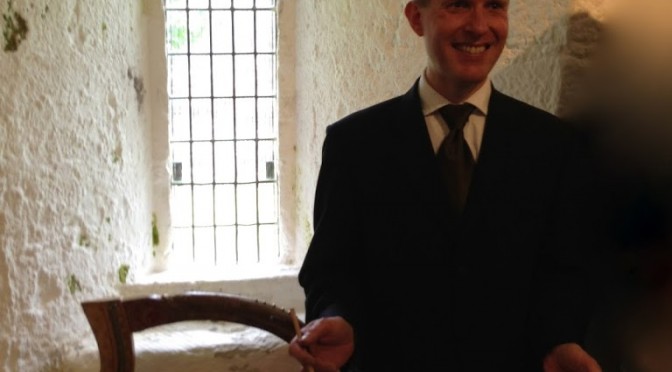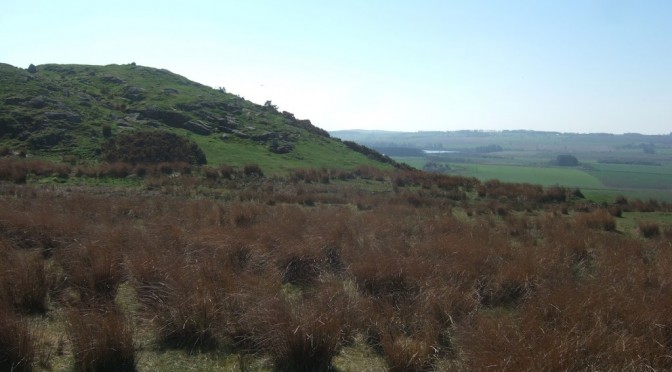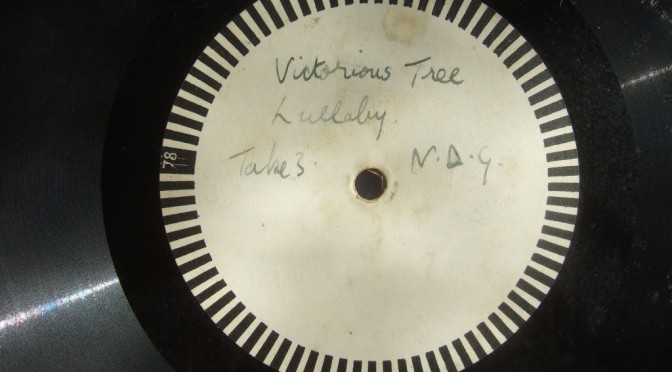Here’s a photo taken by an attendee at yesterday’s cathedral concert. People were, as usual, most intrigued by the bowed lyre. We had a full house, and the sun was shining. People came to the event from as far away as the west coast, and there was even a visitor from Bergen who appreciated the Norwegian connections in the programme!
news
Margaret 1281
On 4th July, I’ll be performing in the cathedral ruins in St Andrews, for the start of my summer series of medieval harp recitals.
Held in the atmospheric surroundings of the ruined cathedral, in the small and intimate vaulted medieval chamber of the Priors House, the concert features the beautiful decorated replica medieval clarsach of Mary, Queen of Scots. I’ll also play a set of tunes on the bowed-harp (bowed lyre, jouhikko, gue)
The programme for July’s event tells the story of Margaret of Scotland, 1281: The story of Scotland and Norway, the Royal Wedding and the lead up to the Wars of Independence.
Using a selection of medieval music and traditional tunes from Scotland and from Scandinavia, the late 13th century history and politics will be dramatically brought to life, as the old ballad says: “The King sat in Dunfermline Toun, drinking of the blood red wine…”
There will be only two cathedral recitals for 2013, due to funding cuts at Historic Scotland. The first concert will be Thursday 4th July; the second will be Thursday 1st August. The events start at 12.45pm.
Date and time:
Thursday 4th July, starting at 12.45pm, finishing around 1.15pm.
Venue:
St Andrews Cathedral
St Andrews, Fife, Scotland
Admission Free
Please collect a ticket from the Visitor Centre: 01334 472563
More info about the summer series at St Andrews Cathedral:
http://www.simonchadwick.net/cathedral/
Future events with Simon Chadwick in St Andrews:
Monday 15th July, 2pm, at the Museum of the University of St Andrews:
An Tarbh – Ranald and the Bull. ‘Pibroch’ music for the harp, composed by one of the last of the old Scottish harpers about three hundred years ago.
Thursday 1st August, 12.45pm, at St Andrews Cathedral ruins:
Colainn gun Cheann – Ranald and the Ghost. Atmospheric harp music telling the stories of supernatural exploits from the 18th century Highlands.
Alison Kinnaird
Today I was pleased to be able to introduce Alison Kinnaird, who gave a lovely performance of old Scottish harp music at the Friends of Wighton’s Community Music Day in the Bonar Hall, Dundee. Alison talked and played for an hour to a very appreciative audience, using three different harps.
In this picture Alison is playing her copy of the Lamont harp made by Robert Evans, and you can also see her 1930s Briggs harp. She also had her Renaissance bray harp with her. As well as playing some representative tunes to illustrate the voice and traditions of each instrument, she sang a really super song – one of the big Scots ballads about the murderous sister.
Here’s a photo of my come and try earlier in the day:
Thanks to my glamourous tuning assistant on the right there!
Spitzharfe or Arpanetta
I have a spitzharfe on loan, so here is my first feeble attempts at playing a tune on the thing!
I have written up my researches into the instrument and its history and you can read my article on my website at www.simonchadwick.net/spitzharfe
strange brass rod
In the Pitt Rivers Museum in Oxford, there is a little wooden box containing three brass or bronze tapered pins. The left and right hand ones are tuning-pins for early Irish harps, but the middle one is a mystery to me. It is labelled and described as a harp tuning pin but this is clearly rubbish – its tapered shaft is hexagonal and its wide end is in the form of a female bust with stubby crossed arms and bare breasts.
I really can’t think what this thing is!
I have looked at it on and off for about 10 years; I kept asking Hèléne La Rue if we could get it out and look at it but we never got round to it. But here’s my recent photo.
Mabel Dolmetsch recordings
I have digitised the first of the three sides I have of these old Dolmetsch transcription discs. I chose the “test” side to do first as I assumed it would be the least interesting.
Actually it turned out to be really fascinating. There are 5 tracks. The first starts with the voice of Arnold Dolmetsch himself, announcing his performance of Lord Salisbury’s Pavan on the Clavichord. At the end he laughs and says “hopeless!”
Then we have three tracks of Mabel playing the early Irish harp. Two of them are fragments of An Seann Triucha (the Old Trugh) – from Bunting’s Ancient Music of Ireland, 1809, p.6.
I do not recognise the third track. I wonder if it is some Welsh music from Robert ap Huw.
You can listen to these tracks here:
http://www.earlygaelicharp.info/Dolmetsch/
Drumcarrow
This morning I was up Drumcarrow Craig. There are great views of the whole of East Fife and beyond. I looked for the prehistoric hut circles marked on the OS map but I didn’t find them. However the ruins of the broch next to the trig point are very clear to see – must have been an impressive tower standing right on the highest point.
The oldest recordings of early Irish harp music?
I have acquired two discs which I think might be the oldest recordings of early Irish harp music, recorded in April 1937. I have not yet played them to hear what is on them – I am still trying to source a suitable stylus for my turntable.
They are one-off lacquer gramophone records, also known as transcription discs – the 1930s equivalent of a cassette tape, for direct recording as a one-off copy. These are not reproductions or duplicate pressings so are almost certainly the only copies that exist of these takes.
Here’s the handwritten label of one of the discs, a double-sided 10-inch disc:
And here is the second record, a 12 inch single-sided disc:
…the small, metal-strung variety [of harp], favoured in Ireland, and the Highlands of Scotland, under the name of Clarsach. I never ceased to thank him [Arnold Dolmetsch] for producing these most fascinating of instruments, whose suavely tuneful music rejoices the heart and charms the senses. One day when I was recreating myself with one of these little instruments, a neighbour who had asked if she might use our telephone, came running into the music room, exclaiming: ‘Oh, what are those lovely sounds? That is the kind of music I want to hear when I am dying!’
From Mabel Dolmetsch, Personal Recollections of Arnold Dolmetsch, RKP, 1957, p148
Cathedral recitals 2013
Historic Scotland have confirmed the dates and times of my harp recitals at St Andrews cathedral ruins here in St Andrews, Fife.
Due to funding cuts at Historic Scotland we are only running two events this year. They will be on the first Thursday of July and August – 4th July and 1st August, at 12.45pm.
For more information please see my cathedral recitals web page.
Edinburgh Harp Festival

This is a portrait of harpmaker Tim Hampson, with the replica Erard single-action pedal harp that he made – one of the best harps at the harp festival each year in my opinion.
This is a photo (taken by Karen Loomis) of me playing a very interesting harp that was at the Telynau Vining stand. It is a Welsh triple harp made by the Llandudno maker Hennesy Hughes (I think) in the late 19th century. I was very keen to play this harp as it is set up for left-orientation player (right hand bass, left hand treble), with the bass singling out to the right side. It was really a delight to try this harp – I usually have great troubles playing triple harps as they are almost always set up for right hand treble, left hand bass playing.
More info about this harp from Camac.
















